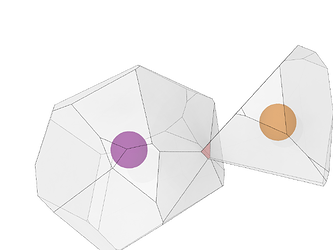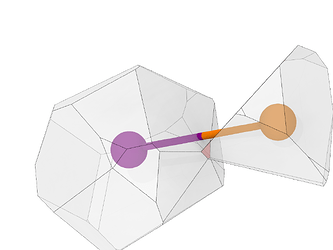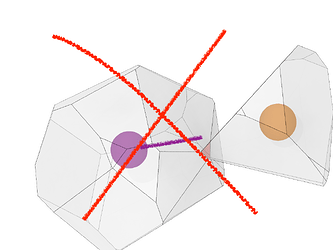I believe the Voronoi indices computed for certain particles are incorrect when using an absolute/relative face area threshold (e.g., 2%). Being a new user, I’m unable to attach a file. However, it’s easy to verify that for some particles the sum of Voronoi indices (n1 + n2 + n3 … + n10) does not equal the number of coordination (bonded particle)
The sum of the Voronoi indices always has to match the reported Coordination particle property, but - when you use a relative face area threshold - not necessarily the number of Voronoi bonds attached to that particle.
Let’s consider a case where you have two adjacent Voronoi cells, one with a larger surface area than the other. They share a face as shown in the attached screenshots. When you have specified a relative face threshold area (to exclude some faces to be counted and reported in the Voronoi Index and Coordination particle properties), you can create a scenario where the marked face might be excluded in the statistics of the larger Voronoi cell, but not in the smaller one. This will be correctly reflected in the Coordination and Voronoi Index particle properties, but you cannot assume that the number of Voronoi bonds still corresponds to the correct coordination number.
The explanation is that for OVITO bonds are always symmetric. You cannot delete/generate only one half of a bond without the other half. Hope that helps.


